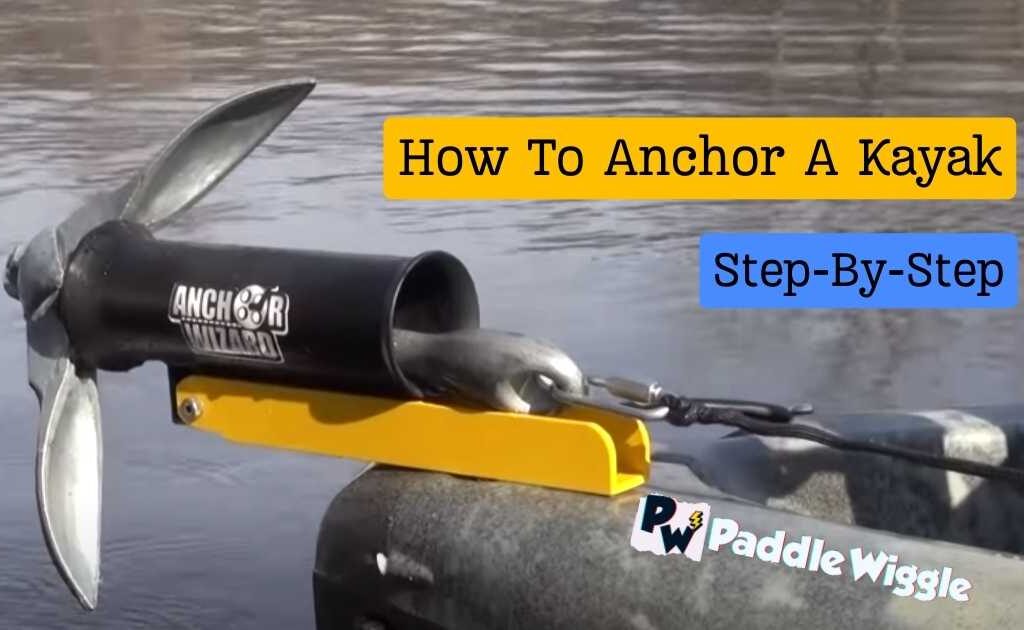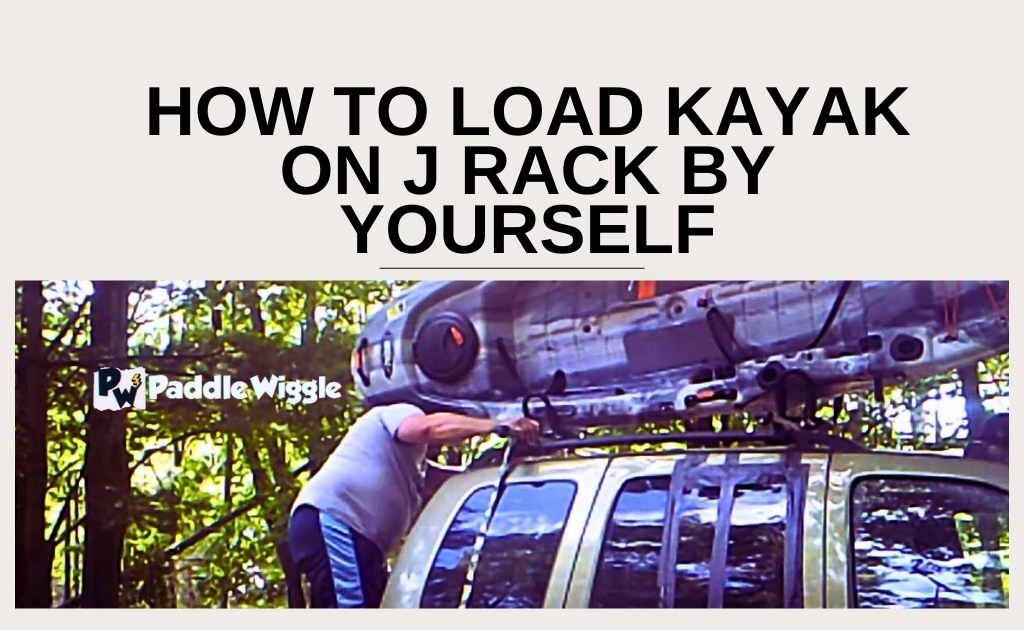The weight capacity of a kayak is the maximum weight it can safely carry, including you, your gear, and any extras. It’s important to maximize this capacity because it allows you to take more stuff with you on your kayak trips, whether it’s for a short day outing or a longer adventure.
However, some kayaks, especially smaller recreational ones, have limits on how much weight they can handle. This can restrict what gear you can bring or even how many people can join you on your kayaking adventures.
But how to increase the weight capacity of a kayak? There are a few ways to do it. You can use outriggers, which are like floating stabilizers, or add buoyancy or float bags to your kayak. These changes help your kayak carry more Weight without compromising safety or performance.
In this guide, we’ll explore different techniques and modifications to boost your kayak’s weight capacity so you can take all the gear you need for your journey. Let’s get started!
Contents
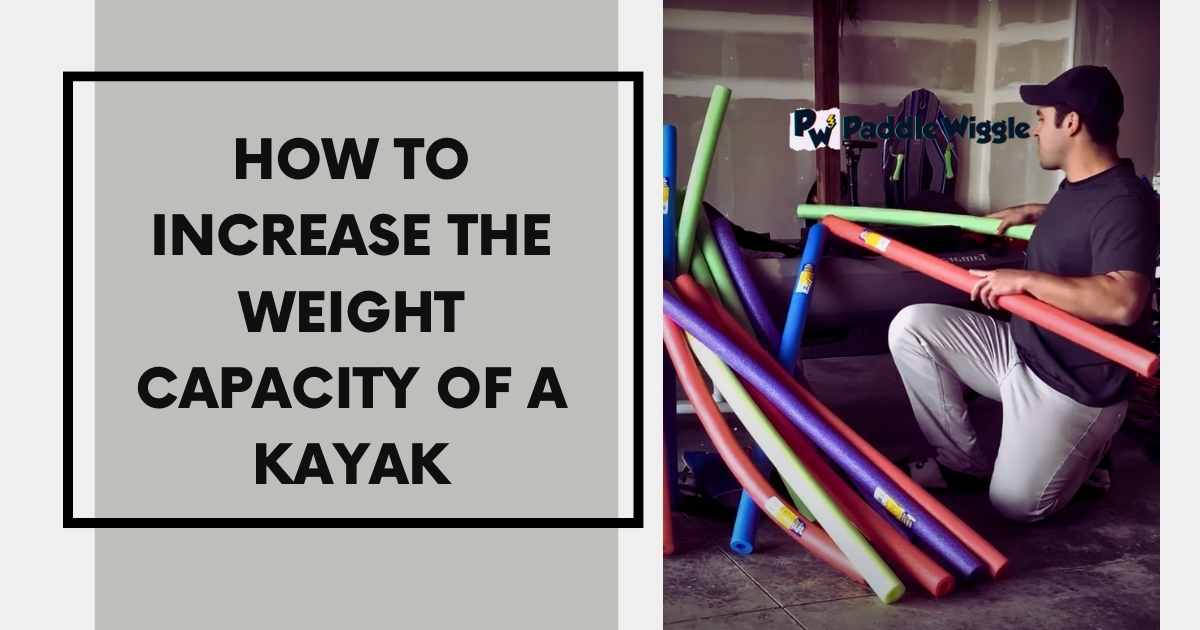

Understanding The Weight Capacities Of Kayaks
It’s important to understand the weight capacity of your kayak. Kayaks come in various kinds, and each kind can hold a different amount of weight. It’s really important to know how much weight your kayak can handle so that you can stay safe and have fun when you’re out on the water.
Different Types of Kayaks and Their Weight Capacities
Kayaks come in various shapes and sizes, each designed for specific activities such as recreational paddling, fishing, or whitewater adventures. These different types of kayaks also have varying weight capacities.
Recreational kayaks: Usually, these are smaller and can carry less weight, usually between 250 to 350 pounds. They are suitable for calm waters like lakes and slow-moving rivers.
Touring/Sea kayaks: Made for longer journeys and big adventures, these kayaks are bigger and can carry more weight. They can typically carry between 300 to 400 pounds.
Fishing kayaks: Fishing kayaks are made just for anglers, and they can hold more weight because they need to carry extra fishing gear. Their weight capacities can range from 350 to 500 pounds or more.
Factors That Determine a Kayak’s Weight Capacity
Several factors determine a kayak’s weight capacity:
- Hull Design: The shape and construction of the kayak’s hull play a significant role in determining its weight capacity. Wider hulls tend to offer greater stability but may sacrifice speed.
- Materials Used: The materials used in constructing the kayak impact its overall strength and durability. Different materials can handle varying amounts of weight.
- Cockpit Size: The size of the cockpit affects how much space is available for the paddler and their gear. A larger cockpit allows for more storage options without compromising stability.
- Buoyancy: A kayak stays afloat because of how it’s designed, like having special compartments or air pockets called bulkheads. These features keep it from sinking, even if you’re carrying a lot of stuff.
Importance of Knowing Your Kayak’s Limitations
Knowing your kayak’s weight capacity is crucial for several reasons. If you go over the weight limit, it can make your kayak less steady and harder to control. This makes it more likely to tip over or have accidents.
If you put less stuff in your kayak, it will become slower and easier to paddle. This can make your time on the water less fun.
5 Strategies for Increasing the Weight Capacity of Your Kayak
If you really love kayaking, you understand how important it is to have plenty of room and weight capacity in your kayak. It helps you carry all your gear on your exciting journeys.
Lots of new kayaks have special storage areas built into them. These spaces are made to fit a lot of stuff while keeping the kayak steady. They help spread the weight evenly so no part of the kayak gets too heavy.
Here are a few effective methods to enhance a kayak’s load-bearing capacity:
#1. Using Outriggers to Increase Kayak Weight Capacity
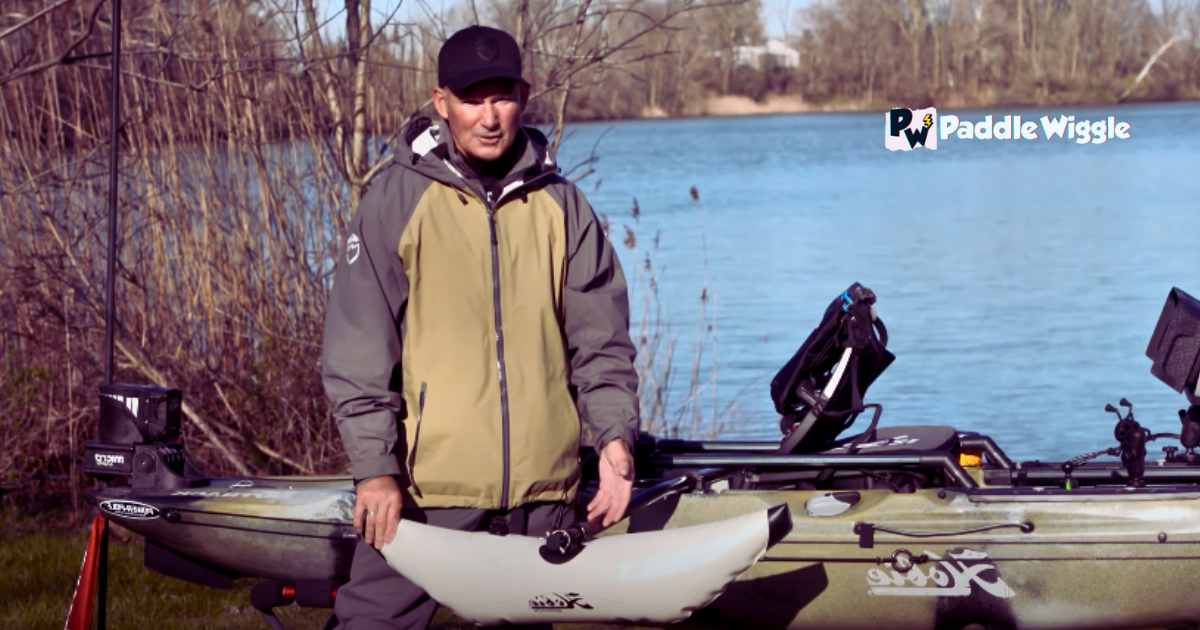

Outriggers are a cool extra thing you can add to your kayak, and they make it able to carry more weight. They keep your kayak steady and help it stay afloat, so you can bring more stuff and heavier things without worrying about safety.
Here’s why outriggers are a game-changer for kayak enthusiasts like yourself:
How outriggers provide stability and additional buoyancy to kayaks
Outriggers are like arms that stick out from the sides of your kayak, making it wider and more stable in the water. They work like little floats, making your kayak stay upright even when you have lots of heavy stuff. When you have outriggers, it’s easier to keep your balance and steer, even in rough or unpredictable waters.
Benefits of using outriggers for increased load-carrying ability
Using outriggers offers several advantages when it comes to increasing your kayak’s weight capacity:
- Enhanced Stability: The primary benefit of outriggers is improved stability. Because they spread the weight over a bigger area, outriggers help you stay balanced when you have heavy gear or when the water is rough.
- Increased Buoyancy: Outriggers give your kayak extra floating power so it can carry more weight without tipping over or sinking.
- Safety Assurance: When you have outriggers for stability, you can be sure that your kayak won’t easily tip over, which lowers the chances of accidents or capsizing.
- Versatility: Outriggers are versatile accessories that can be attached or detached as needed. You can use them when carrying heavy loads, but remove them when not required for more streamlined paddling.
Different types and installation options for outriggers on kayaks
There are various options available:
- Kayak Stabilizers: These are special stabilizer systems made to give you the most stability and floatability. They usually have either inflatable floats or stiff arms that you attach to the sides of your kayak.
- DIY Outriggers: If you want to save money, you can make your own outriggers by using PVC pipes, floats, and other stuff you have around. There are plenty of online tutorials available to guide you through the DIY process.
- Rod Holders as Outriggers: You can also use fishing rod holders as a creative way to make makeshift outriggers. Just attach floats or pontoons to them.
Tips for choosing the right outrigger system for your needs
Deciding on the right outrigger system is a big deal, whether you’re a construction pro or you just enjoy boating. Outriggers are super important because they help keep things like cranes, scaffolding, and boats stable and balanced.
But there are lots of choices out there, and it cannot be very clear to figure out which outrigger system is the right one for what you need.
When selecting an outrigger system, consider the following factors:
- Weight Capacity: One of the most important things to think about is how much weight the outrigger system can handle. It needs to be able to hold the same amount of weight as all the stuff and people you want to put on your watercraft. Make sure it can support your gear, passengers, and any extra stuff you want to bring along.
- Type of Watercraft: Outrigger systems are made for different types of watercraft, like kayaks, canoes, or paddleboards. Be sure to pick one that works with your specific watercraft so it fits well and works correctly.
- Stability Needs: Consider your stability requirements. If you want more stability for things like fishing or taking pictures, you should go for a bigger outrigger system with wide pontoons. But if you only need a little extra stability, a smaller outrigger system should be enough.
- Ease of Installation: Look for an outrigger system that is easy to install and adjust. Some outrigger systems offer quick and tool-free installation, making it convenient to set up and remove them as needed.
- Portability and Storage: Consider how easy it is to carry and put away the outrigger system when you’re not using it. Some outrigger systems can fold up or come apart, which makes them simple to store and take with you.
- Material and Durability: Consider the material and construction of the outrigger system. Look for materials that are durable, corrosion-resistant, and suitable for prolonged exposure to water. High-quality materials will ensure the longevity of your outrigger system.
- Adjustability: It’s important to be able to change where the outriggers are and how they float. Pick a system that lets you adjust them to fit what you need and to work well in different water conditions.
- Buoyancy and Performance: Ensure that the outrigger system provides the desired level of buoyancy and performance. The outriggers should effectively enhance stability without hampering your watercraft’s maneuverability.
#2. Installing Bulkheads for Enhanced Kayak Performance
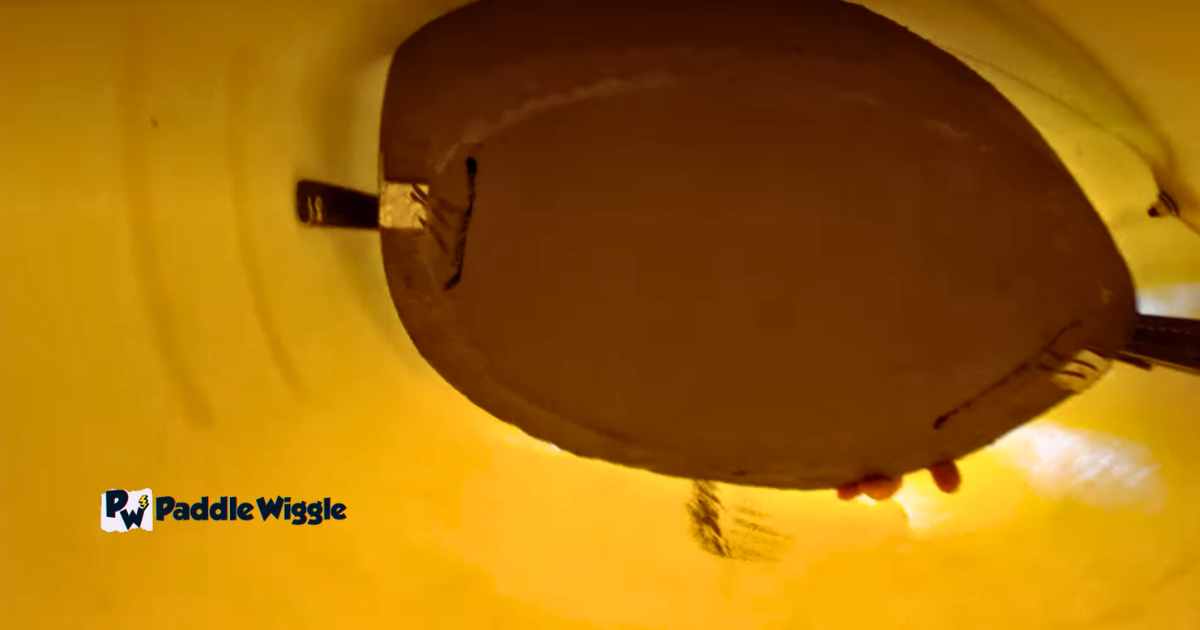

If you want to carry even more weight in your kayak, adding bulkheads is a big improvement. These strong dividers really help make your kayak float better, and they give you more room to store your things. Let’s dive into how they can enhance your kayak’s performance and give you more control over the water.
Role of Bulkheads in Improving Flotation and Storage Space
Bulkheads are like the superheroes of kayaks, providing essential support and stability. Bulkheads are like walls inside your kayak that keep different sections separate. If water gets into one section, the other parts stay dry. This makes your kayak float better, and even if things get rough or you tip over, it won’t sink.
Bulkheads offer valuable storage space in your kayak. You can keep important stuff like safety gear, food, or extra clothes in these sealed sections. This way, your things stay dry, and it helps make the weight in your kayak even, which makes it more balanced.
Advantages of Installing Bulkheads in Different Areas of a Kayak
Installing bulkheads strategically in different areas of your kayak brings several advantages:
Bow Bulkhead: When you put a bulkhead at the front of your kayak (the bow), it helps the kayak float better and go smoothly over waves. It stops water from getting into the front part, especially when the water is rough, and it makes the kayak steadier.
Stern Bulkhead: The stern bulkhead is like the bow bulkhead, but it helps you control your kayak better when you turn and maneuver. It does this by keeping water out of the back part (stern) of your kayak.
Midship Bulkhead: A midship bulkhead is like a barrier in the middle of your kayak that separates it into two parts. This helps your kayak stay afloat better and gives you more space to store things. It also helps you keep your kayak balanced.
Tips on Proper Installation Techniques for Maximum Effectiveness
To ensure maximum effectiveness when installing bulkheads, follow these tips:
- Choose the Right Material: Bulkheads are usually built from tough stuff like plastic or foam. When picking one, make sure it’s not too heavy, can keep water out, and works well with your kayak’s bottom part.
- Measure Accurately: Measure the inside of your kayak carefully to figure out what size and shape of bulkheads you should get. This ensures a snug fit and optimal performance.
- Securely Attach Bulkheads: Use strong glue or screws to firmly attach the bulkheads to the inside of your kayak’s bottom part. Follow manufacturer instructions carefully for proper installation.
#3. Utilizing Styrofoam Blocks and Buoyancy Bags for Packing
If you want to increase the weight capacity of your kayak, there are a few tricks you can try. One option is to utilize styrofoam blocks or buoyancy bags for packing. Using these techniques can give your kayak more floatation and support. This means you can bring more stuff with you without making the kayak wobbly.
Ways to Use Styrofoam Blocks as Makeshift Flotation Devices in Kayaks
Styrofoam blocks can be an inexpensive and effective way to increase the weight capacity of your kayak. Here’s how you can use them:
- Start by gathering a few styrofoam blocks that are suitable in size for your kayak.
- Place the blocks strategically inside the stern or bow compartments of your kayak.
- Secure the blocks in place using zip ties or duct tape, making sure they won’t shift during paddling.
By adding styrofoam blocks, you create extra buoyancy that helps keep your kayak afloat even when carrying heavier loads.
Benefits and Limitations of Using Buoyancy Bags
Another option is to use inflatable buoyancy bags specifically designed for kayaks. These bags are made from durable materials and can be easily inflated with air or even helium if desired.
Here are some benefits and limitations of using buoyancy bags:
Pros:
- Lightweight and easy to transport
- It can be deflated when not in use
- Provides precise control over flotation levels
Cons:
- It may require additional time for inflation/deflation
- Limited storage space inside the bag itself
- Requires proper care to prevent punctures or leaks
Buoyancy bags offer a convenient solution for increasing weight capacity while maintaining stability on water.
Proper Packing Techniques with Styrofoam Blocks or Buoyancy Bags
When utilizing either styrofoam blocks or buoyancy bags, it’s essential to pack your gear properly. Here are some tips to ensure a secure and balanced load:
- Distribute the weight evenly across the kayak to maintain stability.
- Place heavier items closer to the center of the kayak for better balance.
- Use additional straps or bungee cords to secure gear in place and prevent shifting during paddling.
If you use these packing tips, you can put a lot of stuff in your kayak without losing control or balance in the water.
Tips on Securing Gear with These Packing Methods
To enhance the effectiveness of styrofoam blocks or buoyancy bags use waterproof dry bags or containers to protect your belongings from water damage.
#4. Using Float Bags and Buoyancy Bags for Weight Increase


Float bags and buoyancy bags are like must-have add-ons for making your kayak hold more weight. They help your kayak stay afloat better, so you can bring more stuff or have heavier people in it without making it wobbly. Let’s dive into how these bags work and the benefits they offer.
How to float bags and buoyancy bags add extra buoyancy to kayaks.
Float bags and buoyancy bags are like inflatable balloons inside your kayak. They’re tough and made from materials like PVC or nylon. When you blow them up, they make extra air pockets in your kayak, which helps it float better. By displacing water with air, they help support the weight of the kayak and any added load.
Different types of float bags and their installation options
You can find different kinds of float bags in the store. There are “infinity float bags,” which are long and tube-shaped. They go along the inside of your kayak. Then, there are “bow/stern floatation bags” made for the front (bow) or back (stern) of your kayak. Bulkhead floatation bags are custom-made to fit snugly against your kayak’s bulkheads.
Installing these floatation devices is relatively simple. They usually come with inflation valves that allow you to fill them up with air using a pump or by mouth. After you pump them up with air, you can put these bags in your kayak’s storage areas or use the straps that come with them to keep them in position.
Tips on positioning float bags strategically for optimal weight distribution
To maximize their effectiveness, it’s crucial to position your floatation devices strategically within your kayak. Here are some tips:
- Place one infinity bag at each end of your kayak to distribute weight evenly.
- Ensure that bow/stern flotation bags are secured tightly against their respective compartments.
- Think about putting bulkhead flotation bags close to the places where you’ll keep heavy stuff, like camping gear or coolers.
When you put the bags in the right spots, you can make sure the weight in your kayak is even and balanced. This helps your kayak stay stable and makes it easier to control.
Benefits of using these bags for increased weight capacity
Using float bags and buoyancy bags offers several benefits:
- Increased weight capacity: These bags give your kayak more floating power, so you can carry extra stuff or have heavier people on board.
- Improved stability: These bags make your kayak more stable by giving it extra buoyancy, which means it’s less likely to tip over.
- Enhanced safety: When your kayak has more buoyancy if it flips over, it will still stay on the surface of the water. This makes it easier for someone to save you, and it lowers the chance of accidents.
#5. Enhancing Kayak Flotation with Pool Noodles
If you want to carry more stuff in your kayak, here’s a cool tip: use pool noodles! Those fun, colorful foam tubes can give your kayak extra floating power so that it won’t sink, even if you load it up with heavy things. Let’s dive into how pool noodles can enhance your kayak’s flotation.
Role of Pool Noodles in Improving Kayak Flotation
Pool noodles are not just fun toys for the swimming pool; they can be highly useful in the world of kayaking, too. The foam in pool noodles is light and can help your kayak float better. When you put them in the right spots inside your kayak, they can float better overall and carry more weight.
Creative Ways to Use Pool Noodles as Additional Buoyancy Aids
There are several creative ways you can use pool noodles as additional buoyancy aids in your kayak. Here are a few ideas:
- Line the Hull: Cut a few pool noodles into sections and place them along the bottom of your kayak’s hull. This creates a cushioning effect that helps distribute weight evenly and enhances flotation.
- Create Outriggers: Attach longer sections of pool noodles to each side of your kayak, extending outwards like outriggers. These act as stabilizers, providing increased stability and preventing tipping over.
- Build a Bulkhead: To make a kind of barrier inside your kayak, you can use pool noodles. Stick them up and down behind the seat or at certain places along the bottom of the kayak. This way, it divides the inside into sections, so even if one part gets wet, the rest stays afloat better.
- Make Paddle Floats: Cut a pool noodle in half along its length and slip it onto one end of your paddle blade. Use zip ties or duct tape to keep it in place. This makeshift paddle float can be a valuable aid in self-rescue situations.
Tips on Attaching Pool Noodles Securely to a Kayak
To ensure that the pool noodles stay securely attached to your kayak, follow these tips:
- Use Bungee Cords: Attach the pool noodles using bungee cords or straps, ensuring they are tightly secured to prevent any movement during paddling.
- Consider Adhesive: For a more permanent attachment, you can use waterproof adhesive or marine-grade glue to secure the pool noodles in place.
- Test for Stability: Before heading out onto the water, give your kayak a gentle shake to ensure that the pool noodles are firmly in place and won’t come loose while kayaking.
Quick Tips for Increasing A Kayak’s Weight Capacity
Do you find yourself needing help to fit everything you need on your kayak? Whether you’re planning a long camping trip or simply want to bring along some extra gear, increasing your kayak’s weight capacity can be a game-changer.
In the following section, we will share some quick and practical tips to help you maximize your kayak’s weight capacity.
From organizing your gear to making smart equipment choices, these tips will ensure you can pack everything you need without compromising your safety or comfort on the water.
So, let’s dive in and discover how you can make the most of your kayak’s weight capacity!
- Organize Your Gear: Proper planning and organization are key when maximizing load-carrying ability. Make sure to pack efficiently by using dry bags or containers that fit neatly in your kayak. This will help utilize every inch of available space.
- Remove Unnecessary Items: Before you start your trip, think about what you really need. Leave behind any gear or stuff that’s optional, as it might make your kayak too heavy for no reason.
- Upgrade Your Kayak: Think about buying a kayak made for carrying more weight. These kayaks are built stronger with extra storage spaces to hold heavy loads.
- Distribute Weight Evenly: When loading up your kayak, distribute the weight evenly from front to back and side to side. This will help maintain stability and prevent tipping over while paddling.
- Use Deck Storage: Utilize the deck space on top of your kayak by adding bungee cords or straps to secure larger items like coolers or camping gear. This frees up valuable space inside the kayak for other essentials.
- Consider Inflatable Accessories: Blow-up accessories like buoyancy bags or pontoons can make your kayak carry more weight. These can be easily added and removed as needed.
Achieving Increased Weight Capacity in Your Kayak
If you’re an avid kayaker, you know that having a kayak with a higher weight capacity can greatly enhance your kayaking experience. It allows you to bring along more gear, go fishing with ease, and tackle rougher waters without worry.
Importance and Benefits of Increasing Kayak Weight Capacity
Increasing the weight capacity of your kayak opens up a world of possibilities. You can bring along all your fishing gear for an exciting day on the water or pack extra supplies for a longer adventure. The benefits are numerous:
- Versatility: When your kayak can hold more weight, you can use it for different things like fishing, camping, or exploring.
- Convenience: With increased weight capacity, you don’t have to leave any essential items behind. You’ll have everything you need right at hand.
- Stability: When you make your kayak able to carry more weight, it becomes steadier in the water. This means you can have better balance and control.
- Safety: When your kayak can manage more weight, it’s better for safely paddling in unpredictable conditions.
Implementing Strategies Based on Individual Needs
There are several strategies you can implement based on your individual needs:
- Choose the Right Kayak: Start by selecting a kayak with a higher weight restriction or maximum weight limit. Fishing kayaks or kayaks specifically designed for carrying heavy loads are excellent options.
- Upgrade Your Gear: Buy kayaking gear that’s lightweight but tough. This way, you’ll reduce the overall weight of your gear while it still works well.
- Consider an Inflatable Kayak: Inflatable kayaks are known for being able to carry a lot of weight and being easy to carry around. They provide excellent stability and buoyancy while being easy to transport.
- Improve Paddle Strokes: Improve how you paddle to make it easier and more efficient and to reduce the stress on your kayak. Smooth, powerful strokes will help you navigate through the water with ease.
Safety Precautions while Pushing the Limits
While increasing your kayak’s weight capacity can be beneficial, it’s essential to prioritize safety at all times. Here are some safety precautions to keep in mind:
- Know Your Limits: Understand the capabilities of your kayak and never exceed its recommended weight capacity. Pushing it beyond its limits can compromise stability and put you at risk.
- Distribute Weight Evenly: Properly distribute the weight in your kayak to maintain balance and prevent tipping over. Place heavier items closer to the center and lower in the hull for better stability.
Learn More
Can I modify any type of kayak to increase its weight capacity?
Yes, most kayaks can be modified to some extent in order to increase their weight capacity. However, it’s important to consider the construction and design of your specific kayak before making any modifications. Some kayaks may be better suited for certain modifications than others.
How much weight can I expect to add by using outriggers?
The amount of weight added by using outriggers will vary depending on the size and design of the outriggers themselves. On average, outriggers can provide an additional buoyancy of 200-300 pounds or more.
Are there any risks involved in modifying A kayak For Maximum Capacity?
Modifying your kayak does come with some risks. It’s crucial to ensure that any modifications are done properly and securely. Poorly executed modifications could compromise the stability and safety of your kayak.
Final Words
In kayaking, being able to carry more gear and stuff with you on your kayak opens up exciting new adventures. Increasing your kayak’s weight capacity isn’t just about loading it up; it’s about unlocking more opportunities on the water.
So, as you head out on the water, armed with these strategies, you can be confident in your ability to explore, enjoy, and make the most of your kayaking experiences.

